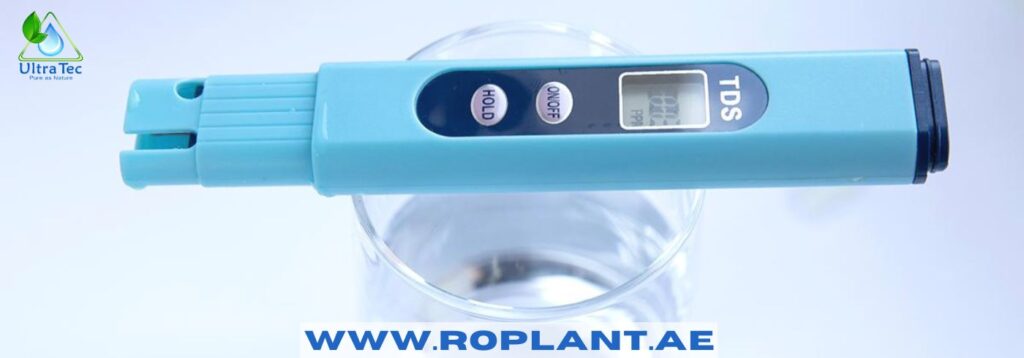As we pursue a healthier life, we guarantee the grade of our drinking water. TDS is of utmost precedence. The Digital TDS Meter For Water tool helps us in this endeavour. This all-encompassing guide delves into this instrument’s importance, utilization, and advantages. You will discover all the essential information about the Digital TDS Meter, ranging from its operational principles to the reasons for acquiring one.
Intro
Water, the life-enriching elixir, is fundamental for our holistic well-being. Have you ever questioned the purity of the water you consume? The answer lies in the Digital TDS Meter for Water, a revolutionary device that eliminates uncertainties regarding water quality. This article delves into the intricacies of the Digital TDS Meter, empowering you to make well-informed decisions about your water source.
How Does a Digital TDS Meter Work?
A digital TDS meter determines the Total Dissolved Solids (TDS) in water, indicating that water with elevated TDS levels contains more dissolved substances. This measurement serves as a fundamental factor in evaluating water quality.
A digital TDS meter calculates the concentration of dissolved solids by measuring water’s electrical conductivity. It applies a minor electrical current to assess water’s ability to conduct electricity, which is enhanced by the presence of dissolved solids.
A digital TDS Meter reads in detail per million (PPM). Higher PPM values indicate water with a higher concentration of impurities. These readings help users understand the quality of their water source.
Understanding Ro Plant TDS Levels
Water TDS levels vary widely depending on the source. Here’s an analysis of what additional TDS readings mean:
- 0-50 PPM: Extremely low TDS, indicative of pure and distilled water.
- 50-100 PPM: Low TDS, typical of filtered and purified tap water.
- 100-200 PPM: Moderately low TDS in natural water sources like lakes and rivers.
- 200-300 PPM: Moderate TDS, often seen in healthy water.
- 300-500 PPM: High TDS, potentially harmful for consumption.
- Above 500 PPM: Very high TDS, unsuitable for drinking.
Benefits of Using a Digital TDS Meter
Using a Digital TDS Meter for your water supply comes with several benefits with Ro plant:
- Health Assurance: Monitoring your water’s TDS levels ensures you consume safe and pure water.
- Filter Effectiveness: It helps evaluate the performance of water filters and water purifiers.
- Cost Savings: By identifying the quality of your water, you can invest in appropriate purification methods, potentially saving money.
- Appliance Protection: Lower TDS levels reduce scale buildup in appliances like kettles and irons, extending their lifespan.
- Gardening and Aquatics: TDS measurement is crucial for maintaining healthy plants and aquatic life in fish tanks.
- Easy To Use: The Digital TDS meter offers user-friendliness, even for those who may not be familiar with the device. Its sizeable LCD screen is easy to read, and the backlit display ensures effortless usage in various lighting conditions.
- Portable: The Digital TDS meters is petite and space-efficient, facilitating convenient portability. Including a belt clip on its carrying case further simplifies device transport, rendering it exceptionally suitable for on-site applications.
Employing a Digital TDS Meter
Operating a Digital TDS Meter is easy. Here’s a step-by-step guide:
- Calibration: Before use, calibrate the meter with a standard solution. It assures correct readings.
- Illustration Display: Collect a water illustration in a clean receptacle.
- Dip the Meter: Submerge the TDS meters into the water sample.
- Wait for Stability: The reading stabilizes, usually within a few seconds.
- Read the Production: The meter will show the TDS lesson in PPM.
Why You Need a Digital TDS Meter
You might wonder, “Why should I invest in a Digital TDS Meter?” Here are some compelling reasons:
- Health Consciousness: It helps you make informed decisions about your water consumption.
- Appliance Longevity: Protect your household appliances from scale buildup, saving money in the long run.
- Water Treatment Efficiency: Ensure that your water treatment methods are effective.
- Peace of Mind: Know you’re providing your family with safe and pure drinking water.
Common Misconceptions
There are some typical incomprehension about TDS levels. It’s necessary to dispel these fables:
- High TDS Always Bad: While extremely high TDS can be harmful, moderate TDS levels aren’t necessarily dangerous.
- Low TDS Always Good: Water with exceptionally low TDS may lack essential minerals. Proportion is climactic.
FAQs
Q: Can a Digital TDS Meter detect characteristic impurities in water?
A: No, TDS Meters provide a general measure of water purity but do not identify specific contaminants. For that, you’d need additional testing.
Q: How often should I test my water with a TDS meters?
A: It is advised to perform regular testing. Monthly assessments serve as a valuable approach to observing any alterations in your water supply.
Q: Can I use a TDS meters for healthy and tap water equally?
A: A TDS meters is adaptable and can be used for miscellaneous water references with RO Plant water treatment companies in uae.
Q: Are Digital TDS Meters accurate?
A: Digital TDS Meters provide accurate readings when properly calibrated and maintained.
Q: Do TDS meters require regular maintenance?
A: Yes, periodic calibration and cleaning are necessary to ensure accurate readings.
Q: What’s the ideal TDS level for drinking water?
A: The ideal range is typically 50-300 PPM, but it can vary based on personal preference and local water quality standards.
